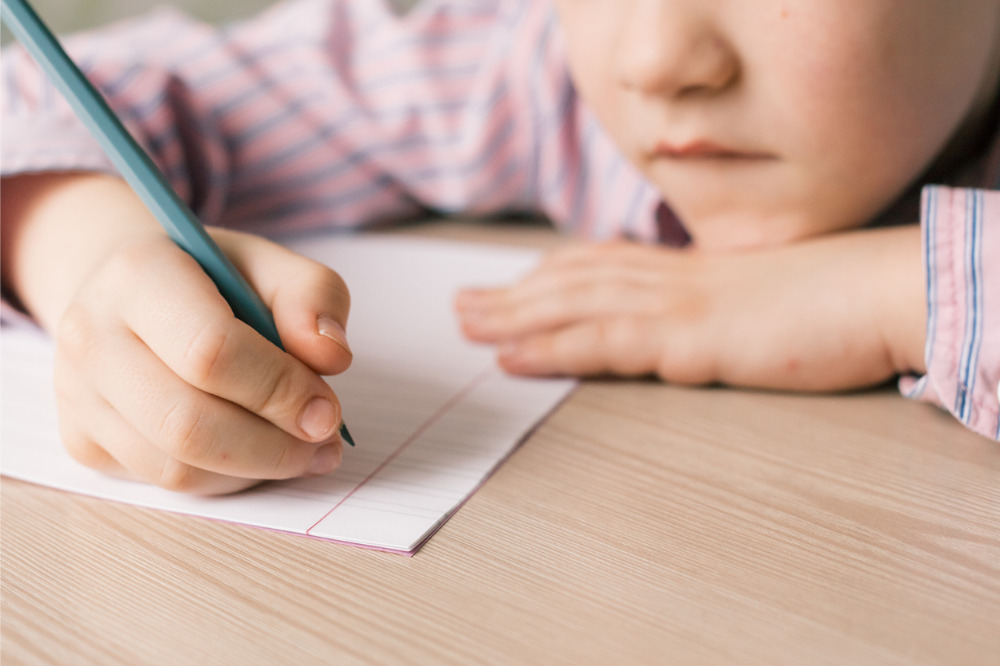
A new Norwegian study suggests that writing by hand improves children’s capacity to learn.
The new research, published on Frontiers in Psychology and posted on the World Economic Forum website, comes amid a push by governments and education systems to improve students’ writing ability.
The independent NAPLAN review, conducted by Victoria, NSW, Queensland and the ACT, found that, in the period between 2008 and 2019, writing performance among students plateaued between Years 3 and 5, before declining in Years 7 to 9.
Earlier this year, Murdoch University researchers urged educators to teach skills such as handwriting and spelling – a call that aligns with the Federal Government’s renewed focus on the basics to lift students’ literacy outcomes.
A study conducted by the University, which looked into how fast and easily can pre-school to Year 1 children can write, found substantial evidence that students who write with pen and paper often produce better learning outcomes later on.
‘More hooks to hang your memory on’
Dutch neuroscientist, Professor Audrye van der Meer of the Norwegian University of Science and Technology (NTNU), says it’s “vital” that children are taught handwriting at school.
“[Handwriting] gives the brain more 'hooks' to hang your memories on,” Professor van der Meer said.
“A lot of senses are activated by pressing the pen on paper, seeing the letters you write and hearing the sound you make while writing”.
She said these sense experiences create contact between different parts of the brain and open it up for learning.
“We both learn better and remember better”.
In the small study, building on her previous 2017 work, Professor van der Meer wired up 12 young adults and 12 children to an electroencephalogram (EEG) that tracks and records brain wave patterns to see which areas of the brain were sparked into action by writing with pen and paper.
Participants were shown 15 different words on a screen and asked to use a digital pen to write and draw them onto a touch screen, and a keyboard to type them.
The research, published on Frontiers in Psychology, showed how parts of the brain were activated when the subjects were drawing and writing by hand. The findings suggest the movement and cognitive effort required by both activities (as opposed to the repetitive one-finger typing action) better enable the brain to encode new information.
Some prominent educators and literacy experts have pointed to NAPLAN as a potential source of the gradual decline in writing outcomes.
Lack of research into NAPLAN writing data
In an article posted on EduResearch Matters, Damon Thomas, a Senior Lecturer in English Education at the University of Tasmania, pointed out that despite the funding and resources that go into holding NAPLAN, “almost no research has sought to investigate patterns of student achievement in the NAPLAN writing test data over time”.
“I wanted to know what the NAPLAN writing test results tell us about male and female student performance over time,” Thomas wrote.
Thomas’ research highlighted two important points that he says are worth considering when thinking about writing outcomes.
“First, any new version of the NAPLAN writing test should be designed and implemented carefully, learning from the current test's history to avoid the need for modifications that call into question whether scores can be reliably compared over time,” he wrote.
“Second, every NAPLAN writing test has found the same concerning gender gap that widens as students progress through school”.
Thomas said that while comparing NAPLAN writing scores year after year is clearly problematic, any single test on its own can be considered a valid measure of writing achievement for that point in time.
“So, we can say with confidence that the gender gap does exist and widens across the school years”.
Planning is key
Seven Steps CEO, Jen McVeity, said NAPLAN needs to increase planning time from five minutes to at least ten minutes, to lend weight to “the incredible power” that planning gives to any piece of writing.
“Can you plan an in-depth piece on a topic like The Gate in five minutes: the time it takes to write a shopping list?” McVeity told The Educator.
“Students need to brainstorm ideas on gates: why gates? Gates to another world, to keep people out, people in, gates to opportunity?”
McVeity said students must then choose one of those ideas and map out the characters, their dialogue, the plot, the moments of tension, and an ending with impact.
“That’s tough to figure out in five minutes,” she said.
“Many published authors will tell you planning takes at least one third of their time. We also need to keep the focus on communication and creativity – not use 11/47 marks on the secretarial side of writing, like spelling and punctuation”.
She said the writing submitted will be a first draft only, in a short amount of time, so it is not logical to penalise students for typos and secretarial errors.
“In addition, the Language Conventions NAPLAN test already measures spelling, grammar and punctuation – so why double test?” she said.
“Students need to be given a fair chance of success when sitting any standardised test, and it is time to reconsider some of the elements of NAPLAN to help achieve this”.


